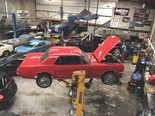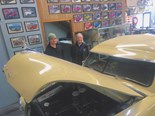Smooth Steerer, Porsche Player, Cooper Caper and more – Mick's Workshop
Mick is toiling away in the workshop and providing you with the car advice you need.
|
|
|
Ford Falcon in the shop.
|
SMOOTH STEERER
Putting power steering in your mid-sixties or early Ford Falcon, with a V8 can be quite a job – though worth the effort.
Everyone likes an engine that makes power and to do that, you put extractors on it. Of course, they take up a lot of room, leaving you short of space for a power-steering conversion.
So you’d come across people using XE/XF steering boxes – which is fine, but then you look more closely and they’ve taken to the extractors with a hammer to get the clearances they want.
We had a customer come in with a Mustang that was nearly undriveable, because of the wide wheels and lack of power steering. So we suggested some alternatives and he gave us the go-ahead.
After a bit of hunting around, I found an electric power-steering column out of the United States. We spend a lot of time talking to this company called CJ Pony Parts, because everything they make is for left-hand-drive.
As with a lot of aftermarket things you buy, they don’t really fit out of the box. With a little work and patience you can make it fit.
If it was a left-hand-drive Mustang – not a problem in the world. But a right-hand conversion will come down to how well the change-over was done.
We removed the steering a column and brackets off the firewall, made our own mounting plate and used their bearing for the centre. It works!
This will make the car much more pleasurable to drive, without tackling all the problems of hydraulic power steering, with clearances and hoses and leaks and pumps and squeaky belts …all gone!
This is the direction modern cars have gone in, and the days of pumps and pulleys is history. It’s a far more elegant solution, with less clutter under the bonnet.
The electric system can be ordered with motors that have different levels of power. Because it’s the first time we’ve installed one, we’ve gone for the strongest option, just to be sure. We may revise that with future builds – we’ll see.
Porsche Player
Hi Mick. I’m sorely tempted by the offer of a car I’ve ‘known’ for a while, which is a mate’s 1984 Porsche 911 3.2 Carrera.
It seems to have been looked after pretty well and is running fine at the moment. However when I look through owner groups on the web, I come across a lot of horror stories of breakdowns – mainly electrical. There seem to be complaints about ECUs, fuel relays and complex electrics – that sort of thing.
What do you think? Would you have a go at one?
David Anderson
 |
| Go in with your eyes open, when buying one. |
Mick says...
German cars of this era often seem to run far more complex electrical systems than many of their contemporaries – why use one relay when we can have three? That said, it’s not a reason to avoid these cars.
Mechanically, they have an awesome reputation. They do come with their own Porsche ‘tax’, like any high-quality European car, and they really are a specialist area. Do not get talked in to your mate at the local garage looking after it for you.
For example, if it’s an early Porsche, they’re a dry-sump engine. I’ve seen the unwary over-fill them with oil without realising this, with some pretty interesting results.
They are a minefield for the uneducated, but that’s no reason not to buy one. Buy it and enjoy it. As far as supercars go, I consider them the best bang-for-buck in the world.
They are right up there with the likes of Ferrari and Lamborghini at a fraction of the price. And they’re more robust.
As for electrics, any good sparky can do the job and don’t be afraid to get on the front foot and update anything that looks old and suspect.
If you’re an older gentleman such as myself, think twice about getting in and out of it in public – it can be very undignified! And if you have long hair, don’t buy a convertible…
Cooper Caper
Mick, I’m hoping you can help. I’ve been looking around for an old-style Mini and have settled on targeting a Morris Mini Cooper S from 1965, or something very close to that.
You mostly hear good things about them. What should I be looking out for?
Jennifer Giles
Mick says...
Yeeess! I love them. First thing, is it a real one? Like GT Falcons, it seems there are more examples of a Cooper S getting around than came out of the factory. So do your checks on ID numbers and the like.
There’s no problem with a replica, so long as you’re paying replica prices, while a real one will carry a hefty premium and can be double the price.
Like all old English cars, rust is their nemesis. If it’s always been an Australian car, that may be a little less of an issue. But check anyway.
I owned one when I was a young man and loved it. It’s like riding a Harley – it just puts a smile on your face.
As for the engine, they’re pretty bulletproof – particularly the 1275.
Lucas is responsible for the electrics on the classics, meaning you get all the old-car issues with reliability until they’re properly sorted out.
The good news is they’re easy to work on and there’s a massive industry (in Australia and the UK) supplying parts and services. It should be a really an easy classic to own, and they don’t take up much room!
Trivial pursuit - first roller bearing
We all depend on ball, roller or tapered bearings of various sorts, but who came up with the idea?
That’s up for debate but the earliest examples of rolling element bearings have been found in shipwrecks dating back to 40BC.
Meanwhile, Leonardo da Vinci drew a study of a roller bearing during his lifetime, which was 1452-1519.
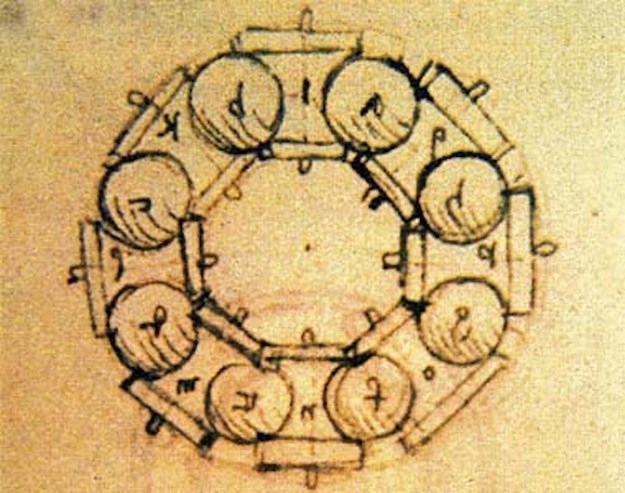
Turbo time
Mick, your recall and diagnosis of the problem with the Guido family ‘Bimma’ (issue 482) has come from an extended period of hands-on experience. There’s no substitute for that kind of knowledge.
One question I have is the durability of turbochargers in current production cars, compared to the early days of the 1980-90s. Is 250,000km a bridge too far for an i30 Hyundai, given an appropriate owner maintenance regime?
My own experience was with the last of the Nissan ULP ETs. Although an Aussie special build, it was running the SOHC EXA engine.
The turbocharger unit, (Garret 03 as I recall), was water-cooled with the radiator capacity and dimensions at least double the width of the naturally aspirated Pulsar hatch, and with two cooling fans.
The engine was bulletproof and had done 275,000km when we let it go.
 |
| ET turbo can spell trouble. |
For its 21 years with us and oil changes every 5000km, were rigidly maintained.
But at around 260,000km the end float on the turbine shaft was such that neither the exhaust driven blades or the compressor blades were rubbing on the relevant housings under boost.
Permanently opening the wastegate allowed the car to be used as a shopping trolley for the remainder of its life with us.
The young guys that wanted it right or wrong were accurately informed of its mechanical status, prior to purchase. Seemingly the cost of a new turbocharger was the least of their worries, and the engine was as quiet as it was when new, with nil oil consumption.
Given this car was used, but never abused, I thought the turbocharger may have been fit for service for a longer period of time. But of course, the revolutions of some of those rotor shafts can see 250,000rpm at times.
Eric Waples
Mick says...
Nothing has changed when it comes to turbocharged engines, Eric, except that many people have forgotten turbos need a wind-down period after they’ve been running hard.
Remember some of the early turbo cars had turbo timers, either as stock or aftermarket fittings? They were a good idea. Ideally you want to let the car idle for 3-5 minutes after a workout.
The mileages you mention haven’t changed and there are a few people out there who can happily rebuild the turbo.
Here's my tip – Mick certified
This is one for owners of any Holden HQ to WB: The intermediate shaft that joins the steering column to the steering box needs some love.
The first indication you get that it’s failed is your steering wheel will want to pop out – as in move up the column towards you.
By now they’re all very worn, if they haven’t already been replaced. Rare Spares sells a replacement.
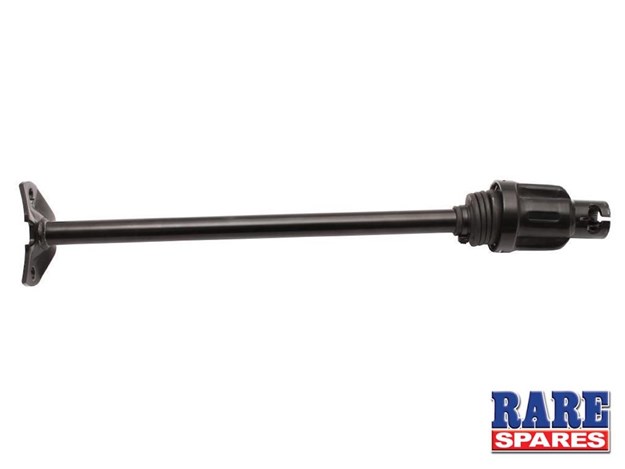
Project 2002
G’day. I’ve got a BMW 2002 sitting in the shed. Like a lot of them, it’s pretty good on the mechanical side, but the body has some problems, and it’s not really roadworthy at the moment.
The rust seems to have got into the usual places including lower sills, doors and windscreen surrounds.
My pockets aren’t bottomless and I’d like to save a bit of money. Plus I’d like to learn a few repair skills along the way. Do you reckon welding and using patch panels is something you can tackle at home?
Marc Russo
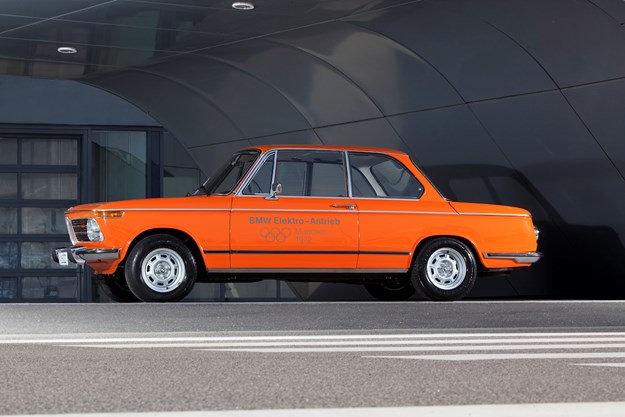 |
| A classic BMW like the 2002 is worth saving. |
Mick says...
There is nothing wrong with having a crack at welding and repairing panels. A lot will depend on how steady your hands and how good your eyes are.
I’d suggest if you’re anywhere within reach of a TAFE or similar, offering welding and panel short courses, go and do it. They’re generally great educationally and a confidence-builder, and will save you money in the long run.
I’d recommend doing a course on TIG welding. Once you master that, you can attack your car with a fair bit of confidence.
You’ll make mistakes along the way, but don’t be scared of it. It’s just metal – even if you blow a hole in it, fill it back in and grind it down. We still mistakes, and we’ve been doing it all our lives. So don’t let a setback stop you.
Something like a BMW 2002 is well worth restoring – boy are they sought-after now!
There are several suppliers of repair panels and the like out there. One we know of is Jaymic.com in the UK. Another is Walloth & Nesch.
If the target is to get the 2002 through a roadworthy, chat with whoever is likely to do the inspection and get an idea of what they expect. Most is common sense, but any info prior to the inspection, is good to have.
Got a problem?
Want some advice on a build or a potential car purchase? Heck, we'll even tackle long distance diagnosis.
Drop Mick a line at uniquecars@primecreative.com.au
From Unique Cars #484, Oct 2023
Unique Cars magazine Value Guides
Sell your car for free right here
Get your monthly fix of news, reviews and stories on the greatest cars and minds in the automotive world.
Subscribe

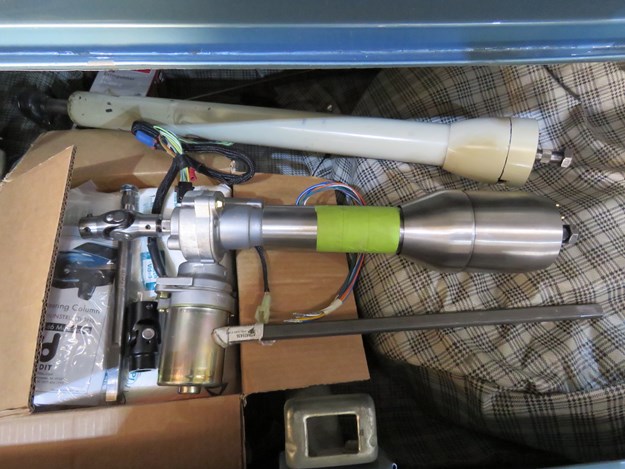
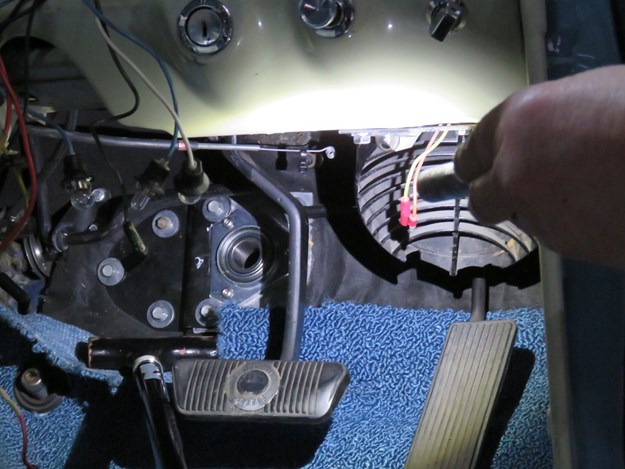
.jpg)








